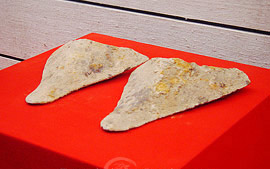| Legole.Com Discover china. Explore the beauty and wonder of the land, people, and culture of China. |
 |
|
|
 |
| |
 Upon reunification of the country, agriculture made a gradual recovery. Large areas of wasteland were brought under cultivation and paddy fields laid out for the planting of rice. In the southern provinces, rice planting was organized so that a double harvest could be achieved. In the northern provinces a system for triple harvests was set up. Sorghum and buckwheat were grown in the Yellow River Valley. Upon reunification of the country, agriculture made a gradual recovery. Large areas of wasteland were brought under cultivation and paddy fields laid out for the planting of rice. In the southern provinces, rice planting was organized so that a double harvest could be achieved. In the northern provinces a system for triple harvests was set up. Sorghum and buckwheat were grown in the Yellow River Valley.
Much attention was given to the matter of irrigation. During the first one hundred and thirty years of their rule, the Tang constructed some 170 water conservancy schemes. New mechanical systems such as waterwheels were introduced to raise water to higher levels thereby increasing efficiency and making it possible to bring yet more land into use.
The increased agricultural output facilitated population growth and during the reign of Emperor Xuanzong, the population reached a peak of over 50 millions.
Land Policy and Tax System
Land distribution formed an important part of Tang agricultural reform and economic development. In the early years of the dynasty, a triennial nation wide census was taken and all inhabitants registered. This was to ensure a sustainable level of tax revenue to the state. In 624, using the census as a basis, the Tang governors reintroduced the land equalization system of earlier times. In this way it was possible to ensure that all families had sufficient land to be self-sufficient and be able to pay taxes.
The tax system was then adjusted and two important reforms introduced.
Zuyongdiao System
Under this system, although tax was raised from landowners, it took the form of a poll tax and was levied on the number of people in a family rather than on the acreage owned. Each person was responsible for three kinds of tax: in grain (Zu), in textiles or other materials (Diao) and in corvee labour or military service (Yong).
After a period of time, this proved unworkable as vast areas of land were owned by merchants, officials, monasteries and others who were not of the peasant classes. The amount of land available for distribution decreased as more was acquired by legitimate means by the aristocracy and members of the imperial clan. These great estates and the tax free land holdings of the Buddhist monasteries failed to render tax, as did the land endowments held by the counties and prefectures. The majority of the peasantry became tenants rather than landowners with a consequent diminution of government revenues.
Double Tax System
In 780 Yangyan, the then Zaixiang (prime minister), advocated a new tax regime. This provided for tax collection twice a year, in summer and autumn, hence the title Double Tax System. This varied from the Zuyongdiao System inasmuch as it was based on the size of the land owned (land tax) and the amount of the harvest (income tax).
To a certain extent the Double Tax System rectified the inequality of the level of taxes imposed on the rich and poor while increasing the revenues of the central government.
Commerce and Manufacturing
Manufacturing
Manufacture was undertaken in both state owned and privately owned workshops. Mostly located in larger cities, the crafts included brocade weaving, papermaking, iron smelting, casting, pottery making and others.
The textile industry prospered. The silk products from Songzhou (now Shangqiu City in Henan Province) and Bozhou (now Bo County in Anhui Province) were most renowned for their high quality. In the south areas of the country, many silk products were listed as tributes. Advances were also made in the production of cotton goods. Cotton was widely grown in Turpan, Yunnan, Guangdong, Guangxi and Fujian provinces. In addition, there were very obvious improvements in painting and dyeing technology.
Marked improvements were introduced in the manufacture of pottery and porcelain. The porcelain from the Xingzhou kiln (in Hebei Province) was particularly noted for its quality and described as 'white as silver and snow'. The white and green porcelain produced in Jingdezhen in Jiangxi Province won itself the nickname 'emulous jade ware'. In southern China, the Yuezhou kiln (in Zhejiang Province) made its mark by producing celadon characterized by its elegance, lightness and strength. Tang Tricolor Porcelain, decorated with yellow, green, white, brown and blue, became famous for the beauty of its designs and the pieces were acknowledged as fine works of art.
Commerce
The rapid growth of both agriculture and manufacturing industry enabled commerce to flourish and created the need for an improved transport system.
So as to speed the transport of grain from the rich area around the Yangtze River to the north of the country, the Grand Canal was extended. Yilu (post roads) were opened running through the country and stimulating trade. The famous Silk Road enabled trade to flourish between China, central Asia and Arabia. After the Rebellion of An and Shi, the Silk Road by sea blossomed. Merchant ships from countries in Asia and Africa flooded in with cargos of spices, medicines and jewellery to be exchanged for Chinese silks and porcelain.
The capital, Chang'an, became the richest and most populous city in the world. It had one million inhabitants, including people from other ethnic groups and countries. Fortified with a wall and moat, the city was divided into quarters including two markets full of shops and stores. These included more than two hundred types of businesses dealing in a wide variety of goods from home and abroad.
|
|
|
 |
|
|
 |
|
